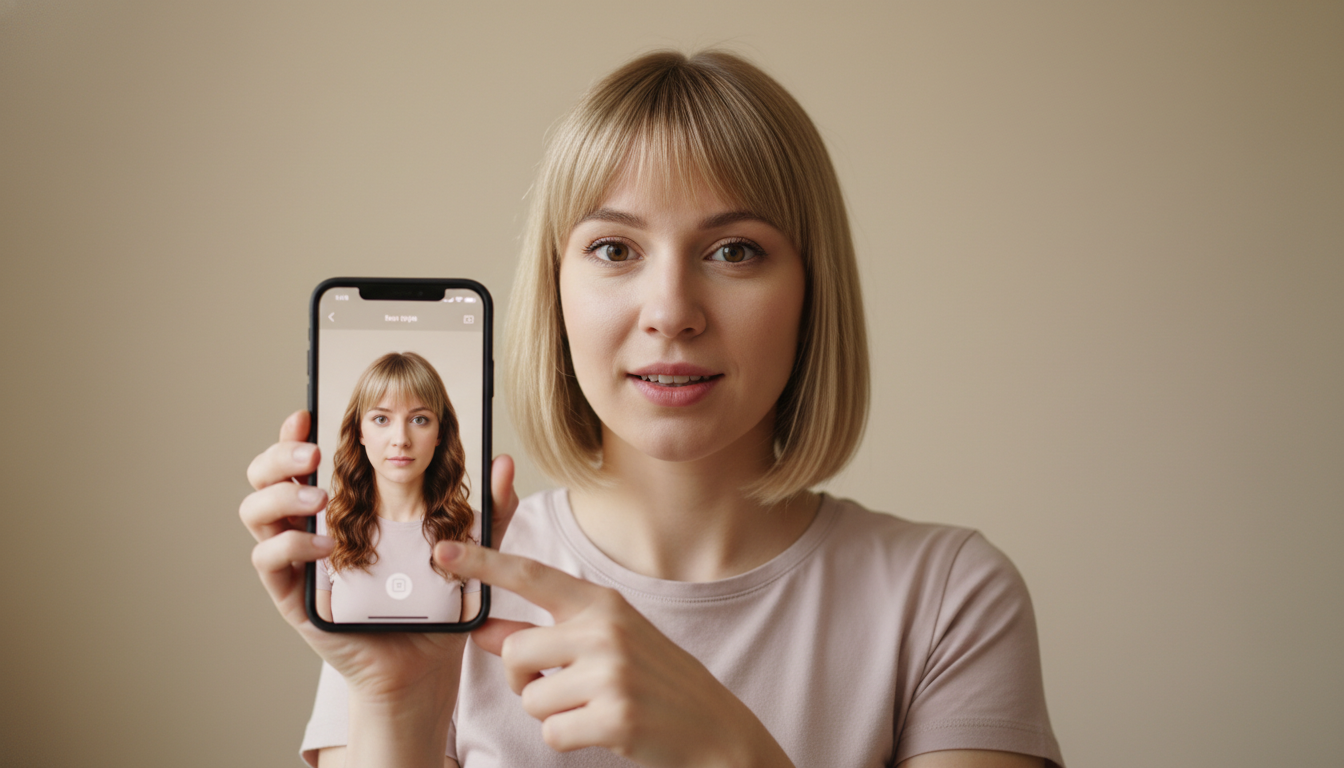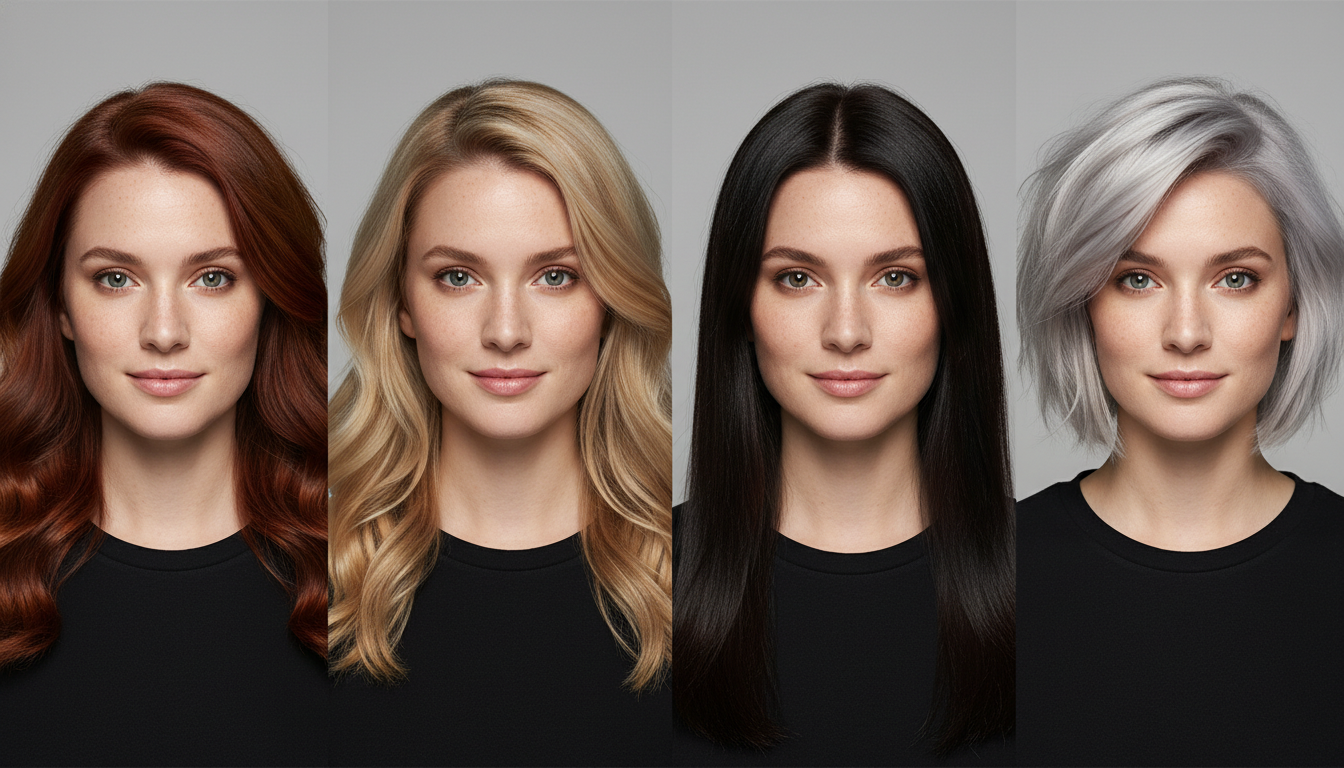What does AI change hairstyle mean and why it matters? AI change hairstyle is the set of algorithms and UX patterns that enable virtual hair try-on, hair-color simulation, and hairstyle synthesis on user images or live camera feeds. It combines hair segmentation, face landmarks, generative models (GANs / neural rendering) and real-time rendering to create realistic previews that reduce decision friction for consumers and lower return rates for retailers. For product teams, AI hairstyle features drive higher engagement, enable remote consultations, and shorten salon decision cycles. According to L'Oréal’s ModiFace announcement, augmented reality try-on has become a commercial standard for beauty brands.
Which core technologies power realistic AI hairstyle change?
AI hairstyle systems rely on several layered technologies: accurate hair and face segmentation, geometric face alignment, generative synthesis, and photorealistic rendering. Hair segmentation isolates hair pixels (semantic segmentation) so recoloring and shape changes do not bleed onto skin or background. Generative models such as conditional GANs and neural rendering pipelines synthesize plausible hair texture and specular highlights; foundational research like VITON virtual try-on demonstrates image-based garment transfer techniques that inform hair transfer methods. For mobile and AR, platform toolkits such as Apple ARKit face tracking provide robust real-time landmarks and blendshape support.

How do product teams design an AI hairstyle try-on flow for mobile apps?
Designing an effective try-on flow requires attention to onboarding, photo capture, and feedback loops. Start with a guided capture UI that enforces frontal face pose and neutral expression to improve landmark accuracy; provide live guidance (pose overlay) and quick retakes. Implement a results gallery showing multiple angles, color variants, and confidence metadata (segmentation quality score). Track KPIs such as try-on conversion rate, time-to-first-result, share rate, and post-booking salon conversion to measure impact.
What are typical backend architectures and latency targets for live try-on?
A production architecture separates lightweight on-device processing (face landmarks, hair mask refinement) from heavier cloud inference (high-quality neural rendering and multiple-style synthesis). On-device inference using optimized models (Core ML / TensorFlow Lite) should target <100 ms for landmark/segmentation to keep camera feel responsive; cloud-rendered high-fidelity images can be delivered in 1–3 seconds for final previews. Use caching for repeat styles, CDN for asset delivery, and asynchronous UX so users see a fast low-fidelity preview followed by a polished high-fidelity image.

Which tools, SDKs, and libraries accelerate development of AI hairstyle features?
Leading commercial and open-source options speed up delivery and reliability:
- ModiFace (L'Oréal) and similar vendor SDKs provide end-to-end AR try-on, hair-color, and analytics integrations (L'Oréal ModiFace announcement).
- Apple ARKit and Google ARCore supply face tracking, blendshapes, and camera parameters for consistent rendering across devices (ARKit docs).
- Research libraries and models (VITON and follow-ups) provide academic implementations for image-to-image synthesis and conditional generation (VITON paper).
Choose vendor SDKs for speed-to-market and cloud quality; choose custom stacks for unique brand aesthetics or privacy-first deployments.
How to evaluate visual quality: metrics and human tests
Automatic metrics (IoU for hair masks, LPIPS for perceptual distance, color delta E for dye accuracy) combined with human A/B testing produce reliable quality signals. Run a two-stage validation: algorithmic gate (segmentation IoU > 0.85, color delta E < 6) then perceptual panel (N=50 users rating realism and likeness). Log failure modes such as occlusions (hands, glasses), complex textures (afro hair), and strong backlight to prioritize model improvements.
What privacy, ethics, and safety considerations must be addressed?
Handle biometric data (face images, landmarks) under strict policies: obtain explicit consent, minimize retention, and support on-device processing when possible. Provide transparent disclosures on how images are used and options to delete data. Be cautious with gender/ethnicity bias—train on diverse hair types and skin tones and include inclusive test sets. For legal compliance, map practices to regional laws (e.g., GDPR in EU).
Practical 6-step roadmap to ship an AI hairstyle feature within 3 months
- Requirements and dataset scoping: gather 2–10k labeled images covering diverse hair types.
- MVP segmentation and live preview: implement landmark+segmentation on-device using Core ML/TensorFlow Lite.
- Integrate cloud high-quality renderer for final previews and batch generation.
- UX polish: guided capture, variant gallery, share & save features.
- QA and bias testing using stratified samples across skin tones and hair textures.
- Launch A/B test and iterate on KPIs (conversion, retention, booking uplift).

Actionable recommendations for product managers and engineers building AI hairstyle features
- Prioritize robust segmentation and diverse training data before chasing ultra-high-res rendering.
- Offer both instant low-fidelity previews and optional high-fidelity cloud renders to balance latency and quality.
- Instrument fine-grained metrics (per-style success rate, device-specific failures) and iterate weekly.
- Partner with domain experts (colorists) to validate color fidelity and naming conventions.
- Maintain a clear privacy policy and data deletion flow to build user trust.
According to academic and industry sources such as VITON image-based virtual try-on research and platform documentation like Apple ARKit, the combination of on-device tracking and cloud neural rendering is the scalable pattern for 2025-grade virtual hair try-on. For commercial integrations and brand-grade AR, consider vendor SDKs such as ModiFace that have been adopted across beauty brands and validated at scale (L'Oréal ModiFace announcement).